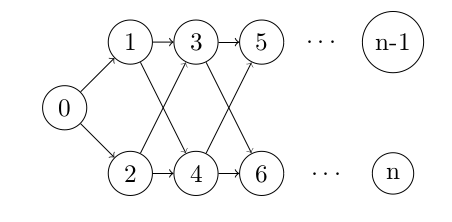Question:
Link to question: Lonely Island | Practice Problems
My question is what suggests that we’ve to use topo sort in this question? Why is my following DFS approach incorrect?
double prob[MAX];
int outdegree[MAX];
void DFS(vi adj[], int s, double parent_probability_through_this_path){
for(int i = 0; i < adj[s].size(); i++){
prob[adj[s][i]] += parent_probability_through_this_path*(1.0/outdegree[s]);
DFS(adj, adj[s][i], parent_probability_through_this_path*(1.0/outdegree[s]));
}
}
Full code: Submission (33961586) for Lonely Island | HackerEarth
I am simply adding all possible paths of reaching a node. There may be multiple paths to a node and hence I am not checking the visited condition. When a node is visited again, I simply add the prob of reaching here through this DFS path to the probability that existed by already visiting it through some other DFS path.This is only passing a few TCs.
PS: vi is vector. Calling function like this
prob[r] = 1;
DFS(adj, r, 1.0);
What’s the flaw in logic?

